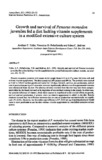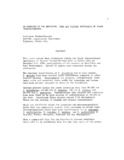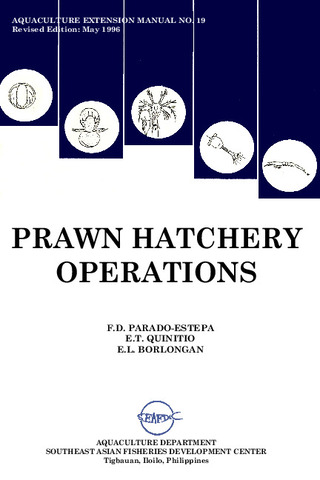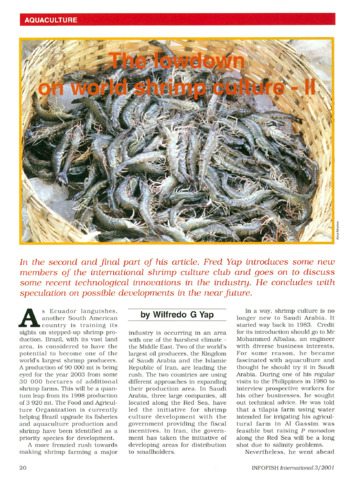Growth and survival of Penaeus monodon juveniles fed a diet lacking vitamin supplements in a modified extensive culture system
Share
Abstract
Penaeus monodon juveniles with mean initial weight from 0.11 to 0.17 g were fed diets with and without vitamin supplement. The diets contained 34% protein and 8% fat. The animals were stocked at 5/m2 in 320-m2 earthen ponds and reared for 135 days. Growth, survival, net production, and net cost of production per kg of P. monodon were not significantly affected even if supplemental vitamins were eliminated from the diet. The absence of extra vitamins from the diet may have been compensated either by the basal diet used or by ingestion of natural food existing in the ponds. In either case, the possible influence of vitamins from these sources is manifested in the overall effects on growth, survival and net production of prawns when no vitamin supplement is added to the diet. Results obtained showed that the difference between diets in cost of production was statistically not significant (P > 0.05). However, the favorable cost difference of P 18.02 per kg of prawns produced would make it more profitable to use the diet without vitamin supplement in a modified extensive culture system.
Suggested Citation
Triño, A. T., Peñaflorida, V. D., & Bolivar, E. C. (1992). Growth and survival of Penaeus monodon juveniles fed a diet lacking vitamin supplements in a modified extensive culture system. Aquaculture , 101(1-2), 25-32. https://doi.org/10.1016/0044-8486(92)90229-E
Subject
Taxonomic term
Collections
- AQD Journal Articles [1249]
Related items
Showing items related by title, author, creator and subject.
-
An overview of the nutrition, feed and feeding techniques of prawn penaeid/shrimps
Piedad-Pascual, Felicitas (Philippine Council for Aquatic and Marine Research and Development, 1989)This paper echoes what transpired during the first International Conference of Penaeid Prawns/Shrimps held in Iloilo City in December 4-7, 1984, particularly on the Nutrition nd Feed Development. Around 25 papers were ... -
Prawn hatchery operations
Parado-Estepa, Fe D.; Quinitio, Emilia T.; Borlongan, Emeterio L. (Aquaculture Department, Southeast Asian Fisheries Development Center, 1996-05)The manual, an updated version of the 1984 SEAFDEC/AQD manual, presents the underlying principles and step-by-step instructions of prawn larval and post-larval rearing. The techniques described are not only applicable to ... -
The lowdown on world shrimp culture - II
Yap, Wilfredo G. (INFOFISH, 2001)This paper introduces some new members of the international shrimp culture club and goes on to discuss some recent technological innovations in the industry, particularly the polyculture of tilapia (mainly Oreochromis ...






